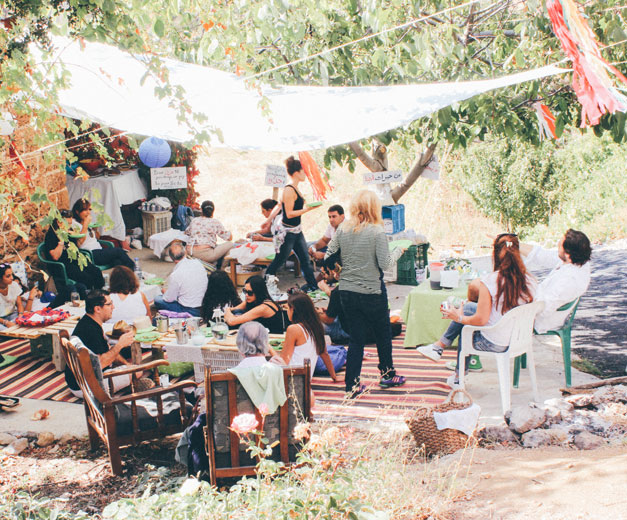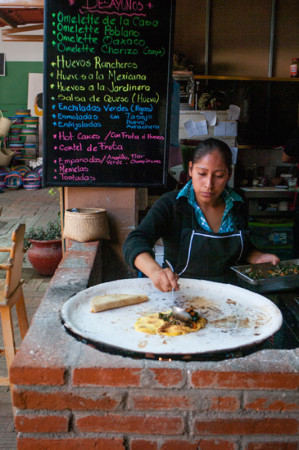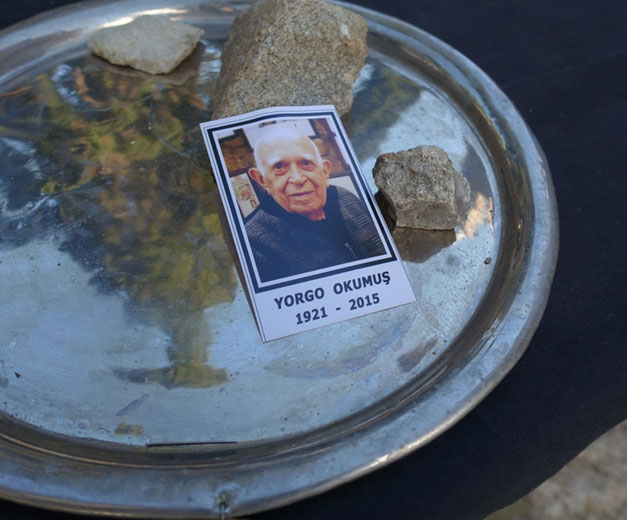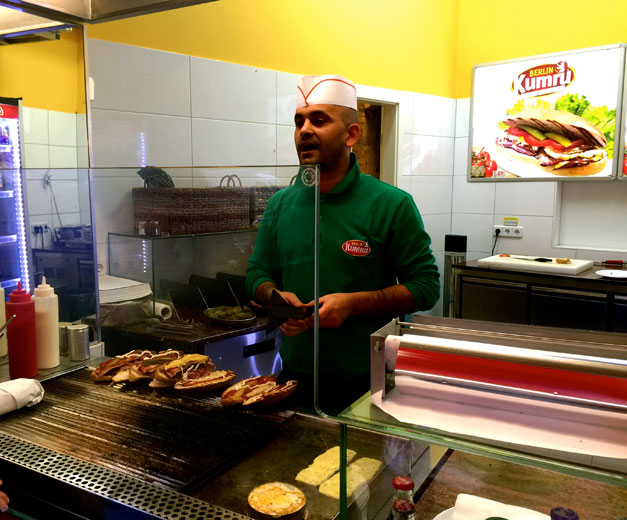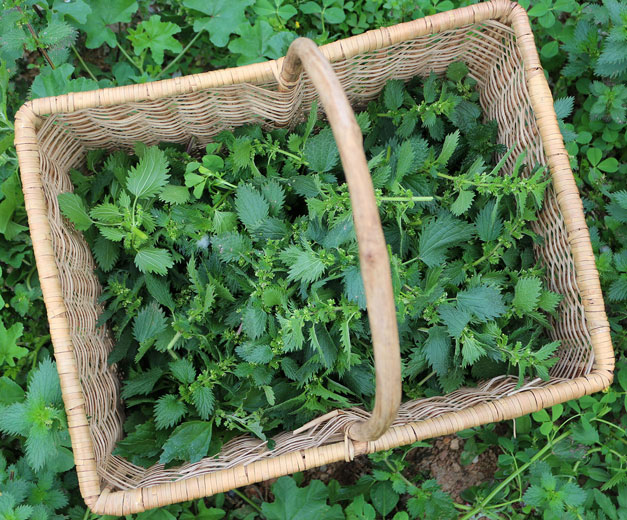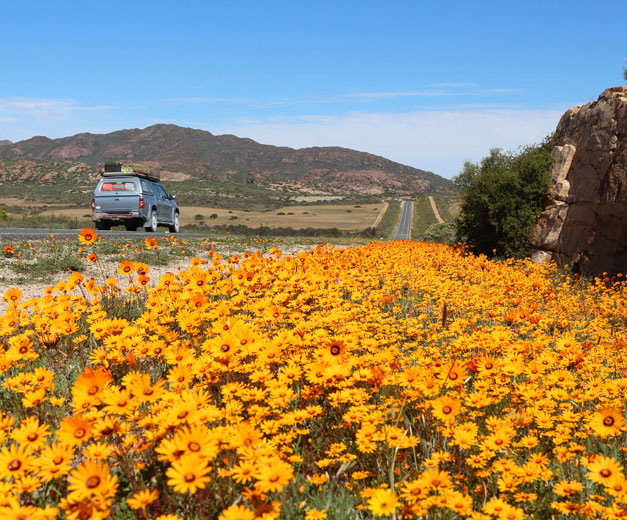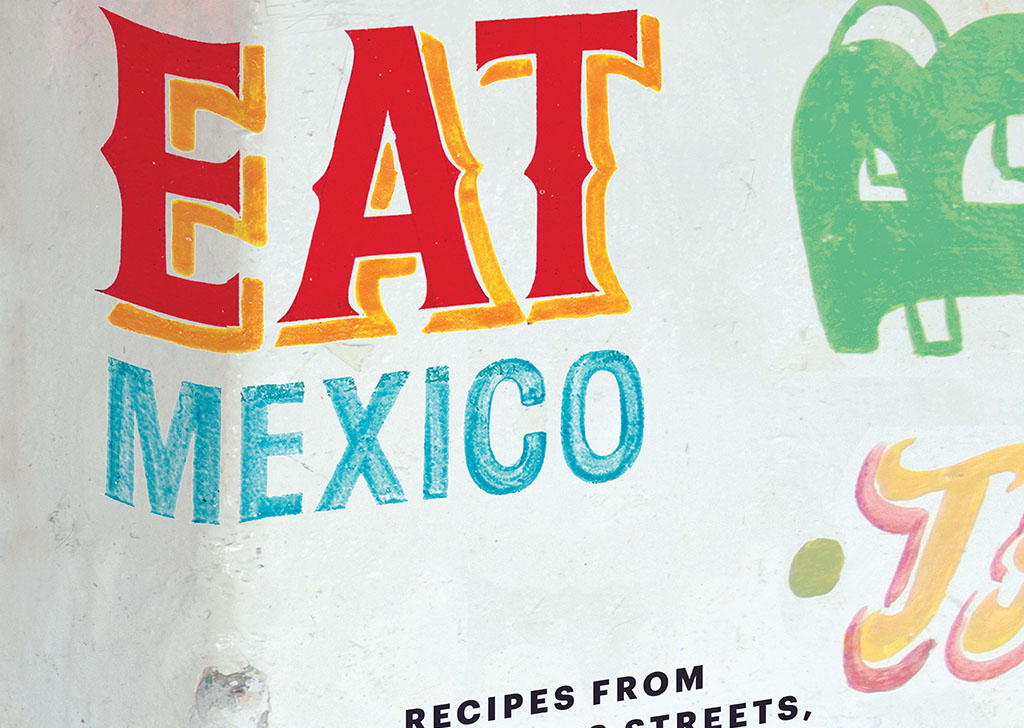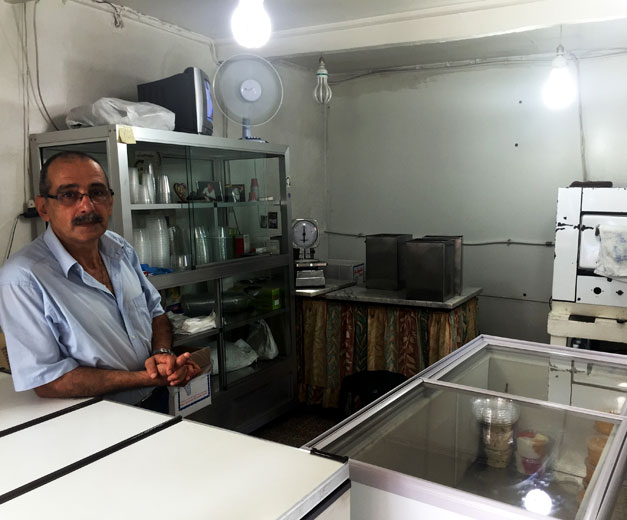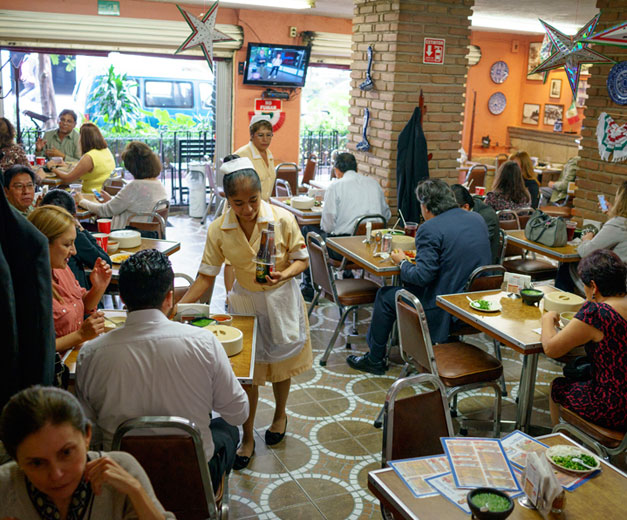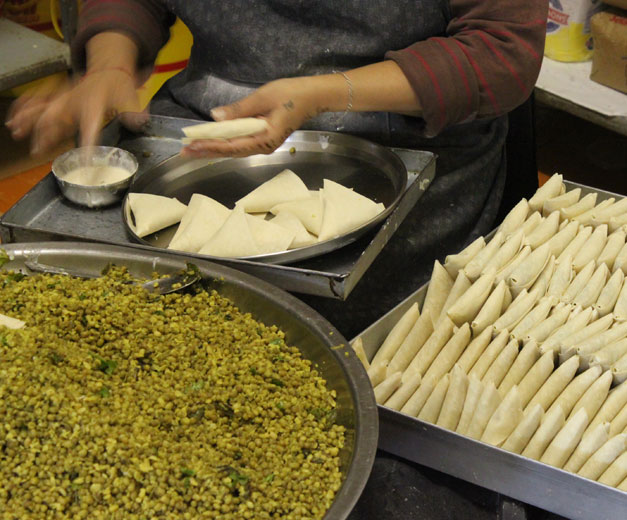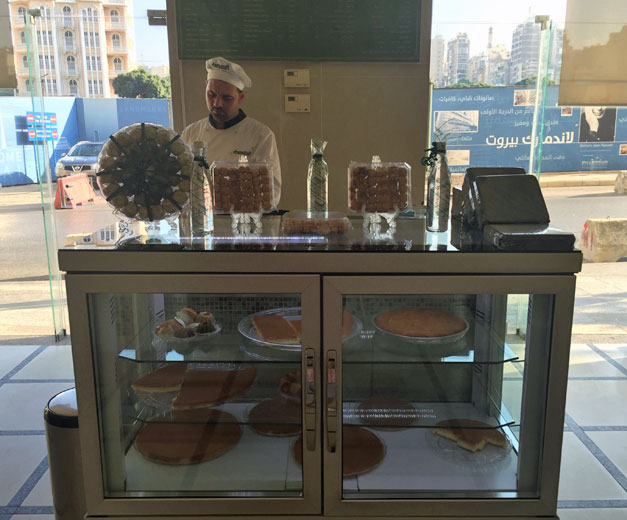We can't find the internet
Attempting to reconnect
Something went wrong!
Hang in there while we get back on track
Search results for
Shanghai
Strictly Cookies: Cookie Monsters, Inc.
For years, expats in Shanghai complained about the lack of quality desserts in the city. Perhaps they just meant familiar desserts, as locals were more than happy to point them to delicious egg tarts, mooncakes or Taiwanese iced treats. But alas, when it came to sweets, there seemed to be a Great Wall-sized divide between East and West. In an effort to bring together sweet tooths from both sides of the dessert dividing line, in 2010 Lexie Comstock started Strictly Cookies, an American-style cookie delivery company in Shanghai that she hoped would delight expats and win over locals along the way. Having first visited China in 2000 while in middle school, Comstock later plunged into studying Mandarin and majoring in East Asian Studies at Harvard.
Read moreIstanbul
The Salepçi of Sütçüler: The Hard Life of a Sweet Trade
By the name of the place, you’d expect the Sütçüler (“Milkmen” in English) district near Isparta in southern Turkey to be a dairyland paradise, thick on the ground with men carrying buckets sloshing fresh milk, cheese wheels stacked in cool dark sheds, verdant hills freckled with cows. But there are no milkmen in Sütçüler, at least not in the wintertime. The area’s name actually has nothing to do with anything going on in Sütçüler itself.
Read moreBarcelona
La Barraqueta-Resolís: Power (and Paella) to the People
El Resolís has already been through several reincarnations, each time as a meeting place for strong, yet completely different – sometimes opposing – social groups. But even across time, changing styles and menu updates and under different owners and chefs, the place has never altered its name or its basic culinary M.O.: traditional, populist, affordable. Located in the heart of the gypsy Gràcia district, El Resolís was founded in the late 19th century. During the second half of the 20th century, it became the headquarters and the social meeting point for the Falange, the fascist and sole legal party of the Francoist dictatorship. This extremely conservative regime repressed the official use of Catalan and other cultural expressions in Catalonia and other Spanish regions.
Read moreMexico City
CB Book Club: Alex Stupak and Jordana Rothman's Tacos
Editor’s note: In the latest installment in our Book Club series, we spoke to Jordana Rothman and chef Alex Stupak, co-authors of Tacos: Recipes and Provocations (Clarkson Potter, October 2015). How did this book come to be? We met right before Empellón Taqueria opened in 2011 and instantly felt that we were simpatico in the way we think about, talk about and approach food. We quickly became friends, and as time passed we began talking casually about collaborating on a book project. Eventually those musings turned into plotting and that plotting turned into a book deal, and here we are a few years later with our names on the cover.
Read moreMexico City
Birria Santa Bárbara: Hangover Helper
For a case of the morning-afters, Mexicans believe that the best cure is a bowl of hot and spicy broth. On Sundays you’ll find the bleary-eyed, hard-partying denizens of Mexico City seeking out restorative traditional soups like the tripe-based menudo, also known as pancita; caldo tlalpeño, made with chicken; and birria. Birria, which means “mess,” is a typical rustic dish from the western state of Jalisco, where it’s made with goat. In Mexico City, however, birria is most commonly made with beef, mutton or pork. And many birria lovers in this town swear by Birria Santa Bárbara in Colonia Verónica Anzures.
Read moreTokyo
Chanko Dojo: Hotpot (and Wrestle) Mania
It’s difficult to imagine a job where a major skill set is eating a vast amount of food and becoming as large as possible. Yet sumo wrestlers, in an effort to bulk up and to be able to throw their weight around in the ring, consume enormous amounts of protein-rich, calorie-heavy meals – primarily in a dish called chanko nabe (a one-dish hotpot) – hoping to do just that. At Chanko Dojo, diners are encouraged to fill up as much as possible as they soak up sumo culture. (For another eatery devoted to wrestling, read our review of this Mexico City spot.)
Read moreBarcelona
Can Vilaró: No Guts, No Glory
With all the talk about the benefits of quinoa, chia seeds, goji berries and similar superfoods, we can’t help but be a little taken aback when Dolors, one of the owners of the restaurant Can Vilaró, explains the benefits of eating cap i pota, a traditional Catalan stew made with calf’s head and leg and chickpeas. According to her, the gelatinous chunks of meat make the skin glow and fight wrinkles. “It works as well as the most expensive collagen facial cream available at stores,” she says with a cheeky smile.
Read moreIstanbul
Ceyhan Ocakbaşı: Wings of Industry
In many parts of Istanbul, it’s not unusual to reside amidst industry in progress. It could be a workshop in your building’s basement where fire extinguishers are refilled, a copper pot re-tinning enterprise just outside your front door or a knockoff Fendi purse assembly line you catch a surprising glimpse of as you look across the breezeway into an adjacent building. Despite zoning laws, the age-old tradition of living alongside the clang of the forge and the whir of heavy instruments is still a reality in Istanbul. And as hard as it may be to weed out all of these workshops, efforts over the past 40 years to do so are not without results.
Read moreOaxaca
El Pochote: Land to Table
Oaxaca has become one of our favorite food destinations in Mexico. A few weeks ago we visited the city again, but this time it wasn’t the moles or the decadent regional food that caught our attention, but an organic market where we had a delicious breakfast one morning. El Pochote (named after a thorny, flowering tree native to Central America) is an organization of local organic producers that was founded in November 2003 by local artist Francisco Toledo. Making an omelet at Mamá Lechuga, photo by Ben HerreraThe market offers all kinds of products, from vegetables and fruits to prepared meals and juices. The main objective of the market is to support those who grow or make healthy products of excellent quality, who interact with the natural environment in a way that respects local ecosystems and who maintain and increase the fertility of the soil and land.
Read moreIstanbul
Farewell, Yorgo: The "Heart of Beyoğlu" Passes On
On any given night, bustling, narrow Nevizade Street in the heart of Istanbul’s Beyoğlu district buzzes with thick crowds of evening revelers searching for the best table while clean-shaven waiters in their customary uniform of pressed white shirts and V-neck sweaters attempt to lure the crowds into their establishments.
Read moreIstanbul
CB on the Road: Isle of Meze
Forty-five minutes south of Çanakkale, a small but flourishing ferry port sits outside of the town of Geyikli. Nestled between olive groves and farms lies the main access point to the small island of Bozcaada. Until the late 1990s, Bozcaada was disputed territory between Turkey and Greece, isolating the island from foreign vacationers. As a result, the vine-covered passageways of the traditional seaside village have been preserved. Active resistance from island residents prevents large developments from being established and restricts the use of cars within the island’s main town. Consequently, Bozcaada is a haven for those seeking delicious food away from sprawling resorts and crowded beaches.
Read moreRio
Junta Local: New Market on the Block
Rio de Janeiro didn’t need to be told to host colorful outdoor fresh food markets. The feira is a carioca tradition, with wooden booths going up overnight at their weekly locales and filled with wares so standard any local could recite for you off his head what you can and can’t find there. But with a little kick from the tools of the digital age and a hipster-era recalibration of the local palate, the Rio feira has gotten a particularly nice new edition. Junta Local brings together local producers and budding chefs in a biweekly, rotating-location food-fest, often accompanied by live music.
Read moreElsewhere
Berlin Kumru: Ich Bin Ein İzmirli
The kumru sandwich – a specialty of Turkey's Aegean coastal resort district Çeşme – is one of our top guilty pleasures. It comes as heavy on the guilt as it does on the pleasure, with its sodium-laden, coma-inducing blend of grilled hot dog strips, salami slices and buttons of garlicky sucuk topped with melted kaşar cheese, fresh tomatoes and pickles served on a grill-toasted roll somewhat resembling a turtledove (kumru in Turkish).
Read moreElsewhere
Suuring and Sow Thistles: The Wild Vegetables of a Cape Spring
Winter in Cape Town is a wildly gentle season. Freezes are rare in the peninsula city. Instead, the coolest months of the year are defined by rain – sheets of it. Fields and forests and mountainsides turn deep green after the dry summer. Streams rush with tea-colored mountain water, pools form on the flats where arum lilies bloom in profusion, and by late winter, spring flowers are opening in the days of sunny blue sky between rain squalls.
Read moreRio
Majórica: Steak Date
If you go to Rio’s Café Lamas to see where leftist organizers met during Brazil’s military dictatorship, go to Majórica to eat steak where the city’s business and political elites gather today. Located on a residential street in Rio’s Flamengo neighborhood, the restaurant from the outside looks like a three-story house, but for the neon red cursive sign with its name. It was founded in 1963 by two brothers from the Spanish island of Majorca and is now owned by the daughter of one brother, together with 79-year-old Galician-born Ernesto Rodriguez, who worked his way up from being the restaurant’s janitor 50 years ago.
Read moreShanghai
Ask CB: Shanghai Wet Markets?
Dear Culinary Backstreets, I’ve heard about “wet markets,” but what are they exactly? And where can I find the best wet markets in Shanghai? Stocked with all the fresh produce and live seafood that hungry Shanghai residents could ever cook up, wet markets are an essential alternative to the brand-name supermarkets vying for their slice of the market share of the planet’s largest population. These markets are so named because the floor tends to be wet, thanks to the live fish flopping around and the vendors’ habit of throwing water on the ground to keep the area clean. They are, however, under constant pressure from the central government’s drive to urbanize the population and modernize facilities, which has led to the steady destruction of the more traditional ones.
Read moreBarcelona
CB on the Road: Martín Faixó in Cadaqués
“In Cadaqués, we cure anchovies differently than anywhere else,” Rafel Martín Faixó told us. We were sitting at long wooden tables outside of his family’s winery, on a sunbaked hilltop in Cadaqués, two and a half hours north of Barcelona. Rafel is the son of Carmen Faixó and Rafa Martín Mota, and together with his sisters Ester and Georgina, the five of them comprise the Martín Faixó (MF family) brand, featuring three restaurants in Cadaqués and the Celler Martín Faixó winery, with a rural tourism guesthouse on-site.
Read moreMexico City
Mercado San Juan Arcos de Belén: Produce to the People
Having been divvied up and overshadowed and even having come back from a nasty fire, the Mercado San Juan Arcos de Belén, also known as San Juan Salto del Agua, has hung on tight as a staple market in Mexico City’s downtown. Born from the 1950s-era split-up of the original San Juan marketplace, which stood only a few blocks away in what is now the Plaza San Juan off of Ayuntamiento, this is a very budget-friendly market in Mexico City’s downtown, largely bereft of high-end delicacies but bustling with mostly working-class families. It is shouldered by two major traffic conduits, Eje Central and Arcos de Belén, and sits atop the two-line intersection of Metro Salto del Agua on the forest-green and pink lines.
Read moreShanghai
Ask CB: MSG Worries?
Dear Culinary Backstreets, Should I be concerned about MSG when I eat in Shanghai? The addition of MSG to Chinese food has been dividing diners for decades now, yet it appears that most people still don’t really know why they’re trying to avoid the stuff, or if they should even be concerned. We’re here to clear that up, once and for all.
Read moreAthens
CB on the Road: The Cheesemaker of Amorgos
In May, we visited some friends on the beautiful island of Amorgos. While we were driving to the south of the island, in the Kolofana area we came across a very small kafeneio, or traditional coffeehouse. We only wanted to make a quick stop for a cup of coffee and a glass of water, but we ended up getting a lot more than we bargained for.
Read moreIstanbul
Dürümcü Mehmet’in Yeri: The Sharing Economy
Istanbul’s Aksaray neighborhood harbors an unfortunate reputation derived from its seedy nightclubs and the heavy presence of illegal brothels, which turn profits from sex trafficking. But as the city continues to transform at dizzying speeds, Aksaray’s status as an underbelly has begun to be overshadowed by that of a diverse, exciting culinary destination. Streetside Syrian cafés churning out cheap and reliable falafel and shawarma; a handful of Uighur restaurants serving dishes of spicy peppers and succulent morsels of beef bathing in handmade noodles prepared to order; and Georgian drinking dens, where chacha, a grape-based moonshine, is brought out in plastic water bottles alongside juicy, lovingly made dumplings, are just a few of the international cuisines that can be sampled in Aksaray.
Read moreTbilisi
Ezo: Just Like Mom's
The 19th-century homes in old Tbilisi neighborhoods were built in a style Georgians call “Italian Courtyards,” where through a gate or arch you enter a quad enclosed by stories of balconies shared by each family on the floor. This courtyard was the nucleus of each building, where kids safely romped around, monitored by adults from the windows above, as men contemplated domino moves at a table under a tree and women beat rugs on an iron rack in a corner.
Read moreRio
Food Complex: A Favela's Culinary Side Emerges
Comprising a city within a city made of housing complexes and self-built neighborhoods, the Maré favela complex in Rio’s North Zone packs 130,000-plus residents into the area between the Avenida Brasil highway and Guanabara Bay, just south of Rio’s International Airport.
Read moreShanghai
Yang Yang's Dumplings: The Other Yang
Search online for Shanghai’s best fried dumplings, and you’ll come up with hundreds of results extolling Yang’s Fried Dumplings. Though it was once just a humble shop sandwiched between the Bund and People’s Square, the online renown and ensuing crowds have propelled the brand into chain-store ubiquity, populating new malls and shopping streets with fervor. In essence, they’ve become the Starbucks of dumplings; you’re going to get a relatively consistent product, but come on, you can do so much better! Enter Yang Yang’s.
Read moreBarcelona
Building Blocks: Spain's Big Little Fish
Editor's note: To inaugurate our new series, Building Blocks, which explores the fundamental ingredients of the cuisines we cover, we turn to Spain, where anchovies play a large role in the cooking of many regions there. Anchoa, boquerón and bocarte: These names – in Spanish, Basque and Catalan, respectively – all describe the same little fish, the anchovy, and to make matters more confusing, the names also indicate how the fish is prepared, depending on what region you’re in.
Read moreElsewhere
CB on the Road: Boerekos in South Africa’s Blommetjies
In South Africa, many roads lead to boerekos. We chose the N7, the tar artery connecting Cape Town and Namibia. After winter rains, the barren land along the way – known as Namaqualand – bursts into spectacular, botanical hotspot bloom. The floral diversity here is unique. Also unique is the local food.
Read moreAthens
Greece's 2015 Wine Harvest: Smaller Is Better
There is an ancient saying in Greek, Theros, Trygos, Polemos, meaning “wheat harvest, wine harvest and war”: All three are situations that need immediate attention and cannot be postponed until later. Hopefully there will be no war, but having completed the wheat harvest, we are nearing the finish line of the wine harvest.
Read moreAthens
First Stop: Stavriani Zervakakou's Athens
Editor's note: In the latest installment of our ongoing series First Stop, we asked Stavriani Zervakakou, chef of the restaurant Karaköy Gümrük in Istanbul, where she stops first for food when she returns to Athens. Athens rarely lets me down when it comes to food. And although I am a seafood person, the first thing my soul craves after a long stay in Istanbul are grilled juicy pork skewers calmly hugged by the crispy arms of a well-baked pita bread.
Read moreIstanbul
İnciraltı: Meyhane Time Machine
We like to think of İnciraltı, a laid-back meyhane in the sleepy Bosphorus-side Beylerbeyi neighborhood, as a destination restaurant – not so much because of the food, but because of the destination itself. Not that there’s anything wrong with the food here, which is reliably well made. The meze tray at İnciraltı (which means “under the fig tree” in Turkish) is brought to your table carrying all the classics, plus a few welcome and tasty surprises, such as the zingy brined twigs of the caper plant and a sea bass fillet that has been cured in a piquant sauce redolent of curry.
Read moreBarcelona
Entrepanes Díaz: Sandwich Central
Kim Díaz, a well-known local restaurateur and owner of Bar Mut tapas bar and El Mutis cocktail bar, wanted to pay tribute to one of the most humble and sadly underrated Spanish snacks, the sandwich. Sandwiches are generally made by most Barcelonan bars with defrosted cheap bread and greasy fillings, and good ones are not easy to find in the city (though we have written about some great ones). Entrepanes Díaz opened last February with the goal of giving the sandwich the respect it deserves.
Read moreTokyo
Tsurutontan Roppongi: Udon Done Right
The West has gone gaga for noodles, Japan’s most cherished comfort food. Hungry diners pack secret soba dens in Los Angeles for bites of hand-cut anything; they line up to plunk themselves down at sparkling counters offering $100 ramen tastings in New York and pick through ramen au beurre in Paris looking for the next new taste. In Tokyo, ramen masters are now competing for cult status within a ramen culture imported from the United States. Soba chefs are newly coveted for their skill in grinding, rolling, cutting and plating and are praised as master craftsmen.
Read moreMexico City
El Parrillón: Gaucho Tacos
Tacos are everywhere in Mexico City, and though the options are many – chicken, al pastor, carnitas, carne asada – the basic ingredients tend to be the same wherever you go. That’s why, as we were walking the aisles of Tianguis La Raza on a Sunday morning, El Parrillón caught our attention. A big sign announced tacos – nothing new there – but besides the classic chicken and bistec, cecina and arrachera – all different cuts of beef – El Parrillón (roughly, “The Big Grill”) offers several Argentine-style sausages and cured meats, including chistorra, a small spicy sausage, and panceta, pork belly (like Italian pancetta), as well as Spanish chorizo, which, unlike the fresh Mexican sausage, is cured. But for us the real draw was griddled provolone, which we had never seen on a taco before and happens also to be one of our favorite cheeses.
Read moreIstanbul
Meşhur Öz Suruç: The Yellow and the Green
To the uninitiated, the restaurant owners of a small corner of Istanbul’s Yenibosna neighborhood might come off as having an unhealthy obsession with particularly garish versions of the colors yellow and green. As we recently explored the lower end of the Yenibosna neighborhood, one of Istanbul’s large periphery boroughs, we stumbled upon a small cluster of kebap shops spread out amid a run-down yet bustling strip of auto repair shops and congested rows of apartments, with each eatery’s sign decked out in identical yellow and green trim.
Read moreIstanbul
Koco: Quest for the Holy Grill
Reviewers are often tempted into using metaphors that portray the restaurant as a sacred place -- the sushi temple, a t-bone pilgrimage, chili-cheese fry heaven. But in Istanbul’s Moda district on the Asian shore, we’ve found a praiseworthy fish restaurant that could justifiably be described as a shrine – literally. For more than 50 years, a local Greek family has been serving saints and sinners alike at Koco, a rambling seaside fish house situated atop an ayazma, or sacred spring. There’s meze and fresh grilled fish with raki upstairs, candles and a shot of holy water downstairs. Judging by the size of the dining room, Koco is preferred by very large groups. One recent weeknight, though, there were just enough customers to fill in the tables lined along the windows. The view of the old Moda ferry dock and the Marmara Sea from the window side of the room is excellent but leaves you leagues from the coat check where the staff hangs on a slow night.
Read moreAthens
Dionysus Returns: The Greek Wine Revival
There’s been a revolution taking place in Greece over the last couple of decades, and it doesn’t have much to do with the political and economic turbulence troubling the country – it’s all about wine. Wine in Greece, of course, has ancient origins: The first traces of it were discovered on the island of Crete and date back to 2500 BCE, during the Minoan civilization, and the oldest winepress in the world was found in the ruins of Vathypetro, near Heraklio.
Read moreIstanbul
Sıdıka: Last Night a Meze Saved Our Lives
It has been years now since we were first tipped to Sıdıka. The W Hotel had just opened in the splashy Akaretler rowhouse development. Vogue, the rooftop sushi lounge, was still in style. The Shangri-La hotel was under construction down on the waterfront, and it was rumored that some rooms would have Bosphorus views below sea level. Beşiktaş, long the bastion of cheap draft beer joints and university student flatshares, was having some growing pains.
Read moreElsewhere
Hanna Metri: Beirut's Baron of Booza
The end of summer in Lebanon can be tricky. Sometimes it begins to rain in September, causing our favorite summer places to close early; other times it stays hot and humid almost until December. While it’s still hot out, locals seek out one of the treasured regional deserts, booza. At first glance, it seems like ordinary ice cream, but the minute you scoop it up you soon realize this frozen ice cream has a gum-like stretch. Booza is typically known as Arabic ice cream and is made with mastic gum, which prevents it from melting quickly in the hot summers we usually face. Unfortunately, many of the more traditional booza shops have given way to overpriced gelato parlors that serve extremely sugary ice cream to mask their artificial flavors. Few remain that serve traditional Levantine ice cream made with fresh fruit and cream. Ask anyone where you can find this delight, however, and they’ll point you to Hanna Metri.
Read moreRio
Maya Café: Back to Basics
If there is a word to describe the Laranjeiras (“Orange Trees”) neighborhood, it is “pleasant.” Agradável. Agreeable. As you walk up its main drag, Laranjeiras Street, you pass by the creamy yellow and white façade of the elegant 19th-century National Institute for the Education of the Deaf on your right. Soon, on your left, you could come across the youth orchestra Camerata Laranjeiras playing free concerts at the General Glicério fair. It’s measurably Rio’s most progressive neighborhood – in the 2012 mayoral election, it was the neighborhood that most favored human rights activists and opposition candidate Marcelo Freixo (48 percent of the neighborhood voted for him in the election against Mayor Eduardo Paes, whereas the city as a whole voted only 28 percent for Freixo). Follow the rising street to its top and you’ll find yourself at the tourist train, ready to go visit the Christ statue.
Read moreIstanbul
Bus Fare: A Transit Terminal's Food to Go
The Yenibosna bus station sits at the intersection of numerous transit routes, where passengers can embark on journeys to the furthest corners of the city as well as to its beating heart. Close to Istanbul’s main airport, and wedged in beneath several high-rise towers that seem to have ascended from the ground overnight, the bus station sits adjacent to a major metro line and below the main E-5 highway, with the grubby, crowded neighborhood of Yenibosna to the north.
Read moreBarcelona
Norte: Northern Exposure
On a beautiful corner of L’Eixample sits Norte, a small yet warm, inviting and light-filled bar with a constellation of shining lights spelling out its name inside and a few tables with fresh flowers. The restaurant was started by three partners, Lara Zaballa, María González and Fernando Martínez-Conde (who left the project last year). They met while working at Barcelona’s acclaimed Moo restaurant and had come to cooking from studying philosophy, art history and journalism at university. They were each looking for something more hands-on, work that gave them direct physical contact with matter, and that shared motivation connected them from the beginning. All three also came to Barcelona from other cities in northern Spain. After their experience at Moo and other projects (Zaballa and Martínez-Conde wrote for the prestigious cooking magazine Apicius), they looked for a more enjoyable and less stressful way to do what they loved, starting with basically nothing but their enthusiasm and their solid ideas to convince the banks to give them a loan to start their own restaurant in 2011.
Read moreMexico City
Beatricita: Taco Centenarian
In a town that runs on tacos, tacos de guisado may be the most ubiquitous version of the iconic dish in Mexico City. They can be found almost anywhere in the city, from specialty restaurants to markets, tianguis and street vendors selling them at stalls or even out of the trunk of a car. It may be an obvious point, but what distinguishes some tacos de guisado from others is how well prepared the guisados (home-style cooked meats or vegetables typically displayed and kept warm in earthenware dishes called cazuelas) are – and sometimes those coming out of the back of a car top ones from more “established” places.
Read moreTokyo
Café Sakura: Every Hour Is Happy Hour
Roppongi’s Café Sakura serves as a restaurant and seating area for a bundle of businesses under the same ownership. There’s the Café with table service, the Wine Shop Sommelier (retail wines straight from the vineyard at considerable discount), L’Atelier du Pain (a Japanese-style bakery and cheese shop) and the French patisserie Coco Ange. Put them together and they enjoyably represent a Japanese take on the Western idea of “happy hour.”
Read moreElsewhere
BAPS Shayona: Beyond the Braai
In a country where people gather around outdoor braais (barbecue grills), chowing down boerewors (farm sausage), steaks and walkie talkies (chicken feet and heads), most would think a South African vegetarian would be an anomaly. On September 24, Cape Town will celebrate Heritage Day, which was recently also declared National Braai Day. Even Archbishop Desmond Tutu has become a “Braai for Heritage” supporter. The idea is that South Africans, once separated by law, can unite around a common national heritage of grilling meat, irrespective of politics, race and culture. Mealies (corn on the cob) are always welcome on the grill, but there’s yet another, more veggie-oriented side to South Africa’s “heritage.” Home to the greatest population of Indian descent outside India, South Africa has one of the largest concentrations of Hindus in Africa. Due to British colonial history, a large number of Indian traders and enslaved workers arrived in the country in the late 1800s. Even Gandhi spent his formative years on South African shores. And in a historically Indian neighborhood of Cape Town, a culturally vibrant street offers vegetarian delights whether or not there’s a shisa nyama (braaiing meat) public holiday.
Read moreTokyo
Uo-Katsu: The Holdout
Before Roppongi Hills rose from the warren of rambling streets, aging wooden homes and traditional Japanese ways nestled amongst embassies and Korean barbeque joints, Azabu Juban was a sleepy section of Tokyo, moored more in custom than the flashy markets and designer boutiques to come. The main shoten gai, or shopping street, was a classic example of Japanese daily life. Small mom-and-pop stores catered to neighbors, and after the third or fourth visit anyone could be a regular. The vegetable man would disappear into the back of his stand and produce a perfectly ripe melon before you had to ask; the flower vendor waved at her customers even if they weren’t in the market for flowers; and the shoe repair man admonished everyone for not shining their shoes regularly enough.
Read moreBarcelona
Els Tres Porquets: This Little Restaurant Went to the Market
Marc Cuenca was the kind of kid who was interested in what other people were eating, and this curiosity was the seed of his own restaurant, Els Tres Porquets ("Three Little Pigs"). A small enoteca and tapas bar with just a few tables, it sits in Poble Nou-El Clot, an area that brings to the restaurant a combination of locals, office workers and Spaniards and foreigners employed by startups and other businesses in the 22@ innovation district. While these days the city – and indeed many cities around the world – is teeming with restaurants specializing in an ambitious menu of small plates intended for sharing, in 2009, the concept was still quite new when the "three little pigs" arrived in the city.
Read moreRio
CB on the Road: Sun, Sand and Seafood in Barra de Guaratiba
Cariocas are doubly lucky. They live in a city bursting with natural beauty even in its concrete corners, where wide red and waxy abricó-de-macaco flowers grow in crowded plazas and you’re liable to have an overly ripe and spikey jacá fruit fall on your head as you rush to an appointment. For many, Rio is vacation, beaches, forests and samba clubs – enough to satisfy the craving for a life more exotic.
Read moreIstanbul
Uğur Manav: Vegetable Healing
Stretching 25 feet alongside a pharmacy in the heart of Istanbul's Şişli district, just a three-minute stroll from Osmanbey metro station (Pangaltı exit), lies Uğur’s fruit and vegetable stand. Day in and day out, come rain or shine, Uğur sits and smiles, utterly engulfed by the fruits and vegetables he sells. Hundreds of people stop by his stand every day: family, old childhood friends, local politicians, tourists.
Read moreElsewhere
Breakfast in Beirut, Part 2: Bohsali
An iconic Middle Eastern dessert, knefeh is to Lebanon what waffles are to Belgium. There are no records of its origins, but according to local legend the cheese-filled pastry comes from the Palestinian town of Nablus, and now it exists in different variations around the region, including in Lebanon.
Read more






